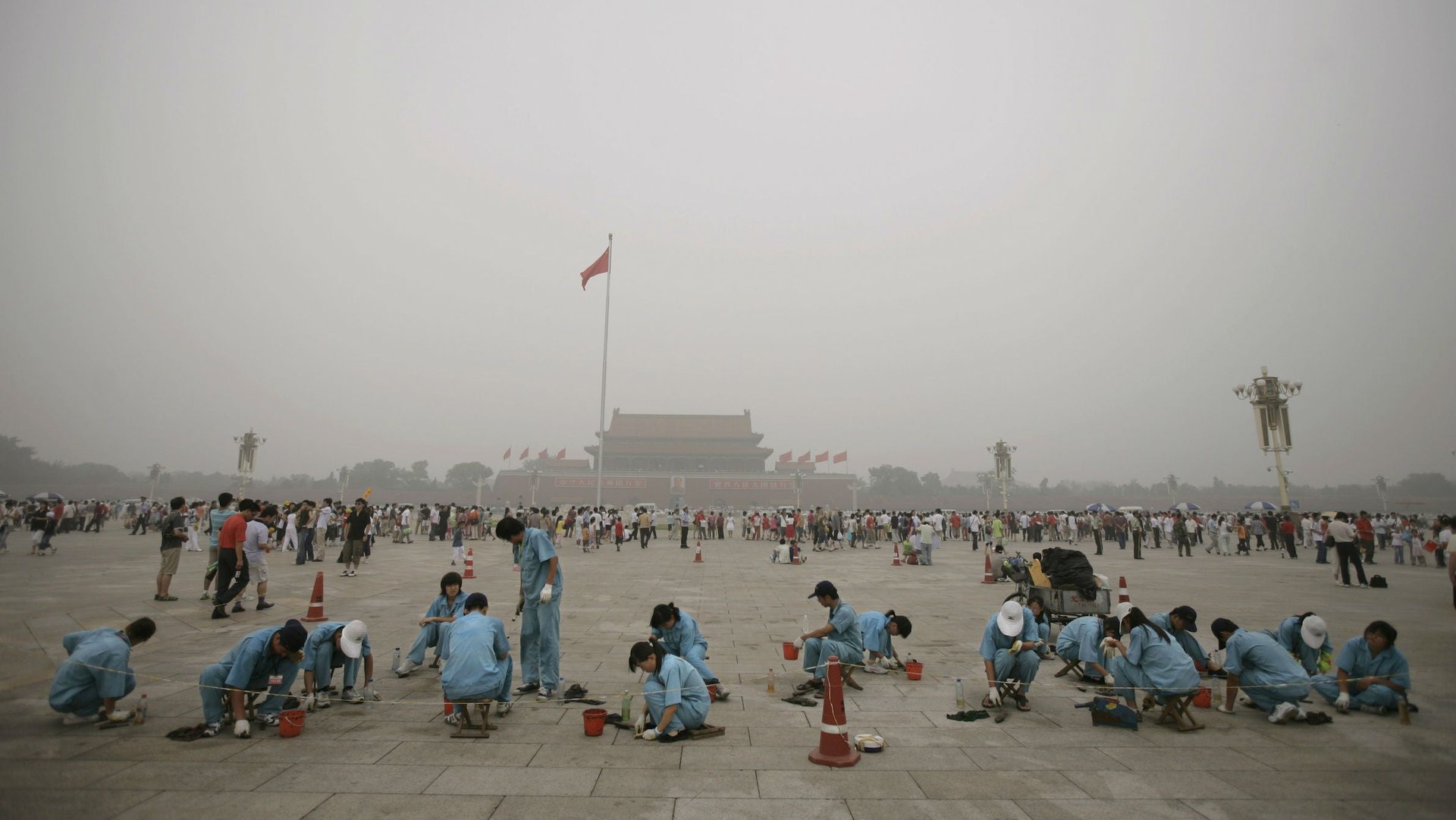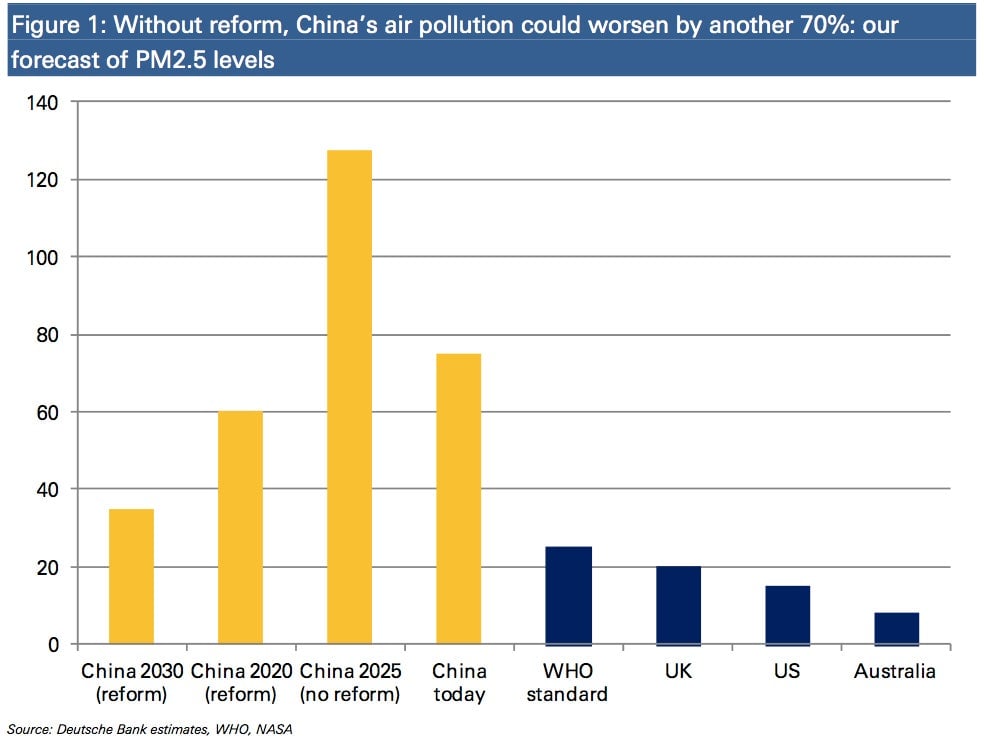China’s nightmare scenario: By 2025, air quality could be much, much worse
China’s myriad plans to deal with pollution don’t look so promising. In a research note today, Deutsche Bank analysts gloomily conclude that, barring extreme reforms, Chinese coal consumption and increased car ownership will push pollution levels 70% higher by 2025.


China’s myriad plans to deal with pollution don’t look so promising. In a research note today, Deutsche Bank analysts gloomily conclude that, barring extreme reforms, Chinese coal consumption and increased car ownership will push pollution levels 70% higher by 2025.
Even if China’s economy slowed to 5% growth each year, its annual coal consumption would still rise to 6 billion tons (5.4 tonnes) by 2022, from the current 3.8 billion tons. Car ownership is expected to increase over the years to 400 million in 2030 from the current 90 million.
With those two figures, it will be very difficult for the government to reduce the national average of PM2.5, or air pollution that is small enough to enter the bloodstream. The current national average is 75 micrograms per cubic meter. In January, PM2.5 levels in Beijing reached 900 micrograms per cubic meter.

For China to meet its goal of reducing particulate matter to 35 micrograms per cubic meter by 2030, China will need to implement aggressive measures, the bank says, like reducing pollutants from coal-fired plants, cutting the number of cars on the road, and massively building up public transportation. Even then, the air pollution level would still above the level deemed safe by the World Health Organization (25 micrograms per cubic meter).
Still, it’s not impossible. Deutsche Bank points out that the United Kingdom rescued the country from under the ”Great Smog” of the 1950s, thick pollution that killed 4,000 people. A key difference between China and the UK during that time, the Financial Times points out, is that China is more reliant on manufacturing for growth. That’s one more incentive for China to move from a manufacturing-based economy to one more focused on a services industry.